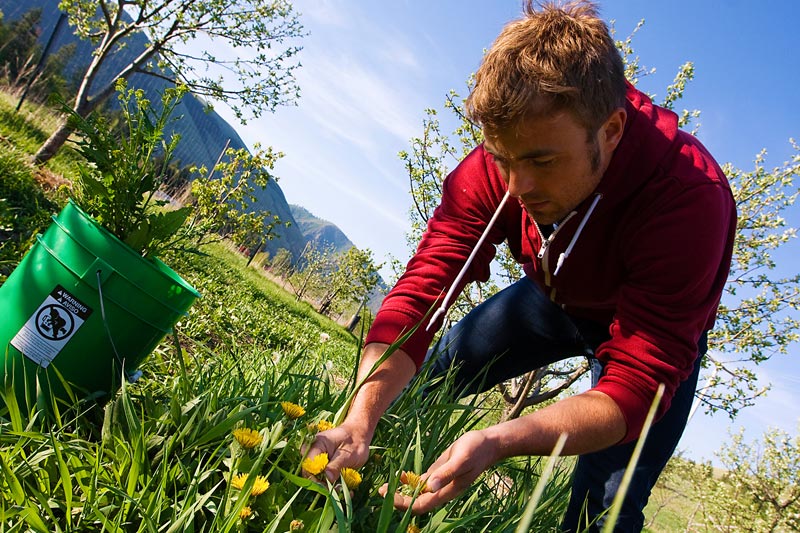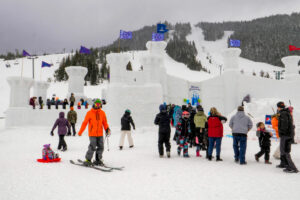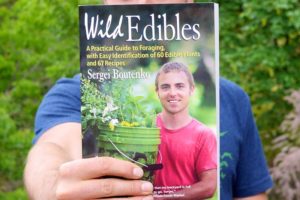Dear Wild Edibles Enthusiasts, did you know your brain catalogs everything you see as images? It’s true! According to Samuel Thayer, author of Nature’s Garden, our eyes capture billions of pictures over the course of our lives. When you come in contact with an object repeatedly, such as a banana, your brain collects more banana images, and your familiarity with bananas becomes further refined. Like a computer, your brain creates a folder in which it saves the information it receives about a particular banana, as well as bananas as a whole. This folder is called a “search image.” Over time, as you continue exposing yourself to bananas, peaches, and pears, your brain makes more search images, and you become great at differentiating one fruit from another.
In the same way you learned to distinguish one fruit from another, you can learn to differentiate wild mustard from common mallow. Through careful observation, you can learn to spot a plant’s distinguishing features and be able to identify it quickly, if not instantly. In order to progress quickly, you must expose yourself to plants often. Each time you reexamine a plant, your search image of this plant will improve, and your awareness will be heightened. If you regularly expose yourself to wild edibles, you will become a professional in no time.
As a way of helping myself progress as a forager, at least once a week I try to allocate fifteen minutes toward focusing my attention on my surroundings. This practice is not super—regimented and often occurs spontaneously. Having a dog helps. My pooch, Bella, requires a walk every day. During our expeditions it’s easy to find a place or a plant that I can lose myself in for a brief moment. I try to keep up this practice throughout the seasons to get a better grasp of how plants change during their various stages of growth. I do this both at home and when I’m traveling. As a result, I am able to spot edible plants easily and have piece of mind that I am not eating something poisonous. My observations also help me feel more connected to my environment. The following plant awareness exercise will help your hone your brain formulate better search images of wild edibles. Give it a whirl.
Sergei’s Plant Awareness Exercise:
Try this exercise the next time you go outside: Pick up a plant. Any plant. It could be one that you know or one that you have never seen before. Look at it for thirty seconds. Notice any striking characteristics this plant displays. Does it have any markings or discolorations? Are the edges of its leaves smooth or serrated? Are the leaf veins easily distinguishable? Does the top of the leaf have a different hue than the bottom? Crush the stem and smell it. What does it smell like? Notice how your body reacts to the aroma. Does your mouth salivate, or is the smell repulsive?
Be creative and come up with your own questions. You don’t have to be too scientific. Ask yourself the kinds of questions that will help you remember the plant you are studying. You are creating a mental map. Finally, if you don’t know what you’re looking at, take it home for identification. For this step it is helpful to have a plant reference book, such as Plants of the Pacific Northwest Coast, by Jim Pojar and Andy MacKinnon. Such books make it easy to identify unfamiliar flora by giving you the ability to search by leaf shape, flower color, the number of petals, and so forth. Once you determine the name of the plant you collected, you can then consult a book on wild edibles to determine its edibility. If you do this once a week for a year, you could learn fifty-two new plants by year’s end.
For more plant exercises such as this one, check out my book: Wild Edibles: A Practical Guide to Foraging, with Easy Identification of 60 Edible Plants and 67 Recipes



